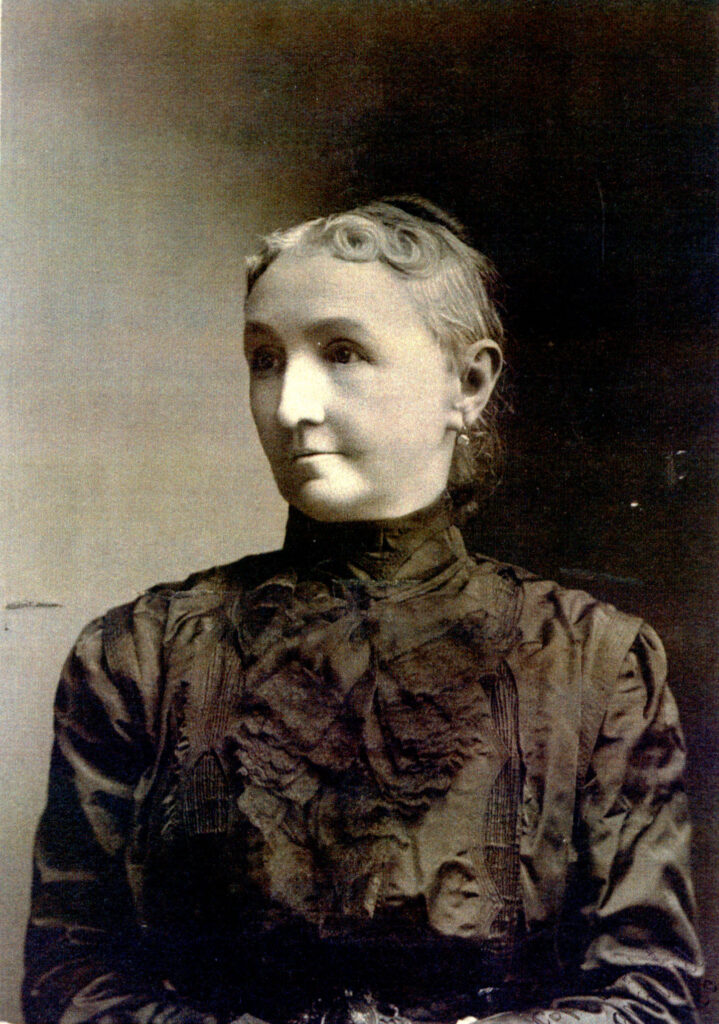Macaria; or Altars of Sacrifice, the third novel by Columbus native Augusta Jane Evans Wilson, was published in April 1864, during the Civil War (1861-65). The book served as propaganda for the Confederate cause and helped to redefine the role of Confederate women during the war. Macaria became a best seller in the Confederacy, with 20,000 copies in circulation by the war’s end, and secured Evans’s status as a leading female southern writer. Northern generals banned the book for fear of its sympathetic Southern message taking hold among Union troops.
Themes
Evans believed that a primary purpose of literature was to provide moral instruction, and Macaria does this by focusing on the theme of sacrifice while also challenging the gender constructs of the day. The novel combines the genre of women’s domestic fiction with the traditionally male war story to present two strong female heroines, Irene Huntingdon and Electra Grey, who expand their conventional gender roles through service to the Confederacy. The book’s title is taken from the Greek mythological character Macaria, the daughter of Heracles, who saves Athens from invasion by sacrificing herself to the gods. In Greek, the word macaria means “blessed,” and Evans depicts the lives of her unmarried heroines as blessed because they have greater opportunities for philanthropic work.

From Documenting the American South, the University of North Carolina at Chapel Hill Libraries
Evans relied on authentic accounts of the war and her own experiences to write Macaria, even lifting whole passages from her personal letters. The first part of the novel focuses on the lives of its motherless heroines, Irene and Electra, in the years prior to secession. Irene, who comes from a wealthy plantation family, befriends the poorer Electra, who lives with her aunt, Mrs. Aubrey, and Mrs. Aubrey’s son, Russell. Mrs. Aubrey serves as a mother figure for the two girls. Troubled by his daughter’s association with the Aubreys, Irene’s father sends her to a northern boarding school, where she studies not only domestic arts but also such classical subjects as astronomy.
The second part of Macaria centers on the heroines’ lives during the war. Irene refuses to marry the cousin that her father chooses for her, but she also rejects her secret love, Russell Aubrey, sacrificing marriage in order to better serve the Confederacy. Electra also rejects marriage, choosing instead to pursue painting. Irene’s choice to remain unwed and to nurse wounded soldiers echoes Evans’s own decision in 1860 to break her engagement with James Spaulding, a northern journalist, because of their differing political views. (It was nearly a decade later, in 1868, before Evans did marry; her husband was Confederate colonel Lorenzo Madison Wilson.)

Courtesy of State Archives of Alabama
In addition to its theme of sacrificing domestic comfort for a greater cause, Macaria also challenges long-held ideas about gender by advocating that unmarried women should have opportunities to support themselves. Despite her call for women’s financial independence in the novel, however, Evans ultimately supported the South’s traditional social hierarchies of race, class, and gender. According to the historian Drew Gilpin Faust, Evans backed away from some of her more unconventional ideas, particularly her somewhat radical stance on women, in the postwar years. She did not endorse women’s political participation, for example, and after the war she spoke out against the feminist and woman suffrage movements of the North.
Editions
Although Evans’s biographer William Perry Fidler claims that the novel first appeared in 1863, a copy of this edition has never been found, and most historians and bibliographers believe that the 1864 edition of Macaria is the first. The novel was published by West and Johnston in Richmond, Virginia, and printed by Evans and Cogswell in Columbia, South Carolina. Evans was unaware during the war that the novel had also been printed in New York. A copy that she had given to a friend was smuggled past the Union’s blockade of Georgia’s coast and rivers to a Confederate-held port in Cuba. From there, the book traveled north, where it was published without the dedication to the “Army of the Southern Confederacy.” The New York edition also includes changes to Evans’s language, making it more accessible to Northern audiences.

By 1896 several new editions had been printed in the North. Some passages were shortened or clarified, and large passages of Confederate propaganda as well as passages critical of the federal government were cut out entirely. In 1992 Faust edited a new edition of Macaria, which reinstates the novel’s original text.








